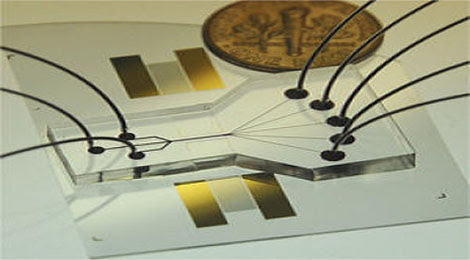Records of Google searches could be used to track the spread of drug-resistant staph infections, filling a gap in existing surveillance for the bugs. With near-real-time, city-by-city information about the spread of MRSA, or methicillin-resistant staphylococcus aureus, public health experts may be better able to fight it.
“Potentially, we can get from Google a more timely measure of trends” than other surveillance systems provide, said epidemiologist Diane Lauderdale of the University of Chicago.
MRSA causes hard-to-treat skin infections that can turn septic, potentially invading organs and the bloodstream. It became widespread in U.S. hosptials during the 1980s, and in the 1990s a second strain emerged outside hospitals, spreading among healthy people. In 2007 the Centers for Disease Control and Prevention estimated that MRSA killed 18,650 Americans in 2005, or more people than were killed by AIDS. In a paper published in the June issue of Emerging Infectious Diseases, Lauderdale’s group compared records of Google searches for MRSA between 2004 and 2008 with MRSA-related hospitalization records. Except for a search burst after that 2007 CDC report, the numbers tracked, suggesting that search data is a reliable indicator of infection.
Patterns of MRSA-related hospitalizations (above, dark red) with patterns of searchers for MRSA and staph (below, blue and green). Emerging Infectious Diseases
The methodology is similar to that used by Google Flu Trends, which caught researchers’ attention after flu symptom-related searches in Mexico preceded the 2009 swine flu outbreak. But whereas Flu Trends was seen as a potential source of early warning signs, better methods of MRSA surveillance are necessary to understand what’s already happening.
“If we had a comprehensive, linked electronic health records system that researchers had access to, we wouldn’t need it. There are systems like that in Scandinavian countries, where you can analyze disease factors in all kinds of ways. But you can’t do that in the U.S,” said Lauderdale.
Added study co-author Michael David, a University of Chicago MRSA specialist, “Right now, in the U.S., there is no surveillance system to track MRSA infections overall.”
The CDC tracks MRSA through the Active Bacterial Core surveillance program, which gathers supports from nine regions. The program is useful, but it leaves large areas unanalyzed and can’t give the fine-grained, city-by-city numbers.
“If we knew the rate was two or three times higher in one city than another, that could be an influence on public health campaigns,” said Lauderdale. Such numbers could also help frame questions about MRSA trends, helping researchers investigate its spread.
More tests of the new method are needed to be certain it works, said Lauderdale. In the meantime, it’s revealed a phenomenon of cultural rather than clinical interest: the evolution of disease-related search terms.
Between 2004 and 2007, people tended to search for both “staph” and “MRSA.” After the CDC’s report, MRSA left staph behind, replacing it in public consciousness. But even as MRSA searches became more common, so did searches for “mersa” — the bug’s phonetic spelling. In a few decades, perhaps, MRSA will be replaced by mersa.
By Brandon Keim
From wired




















